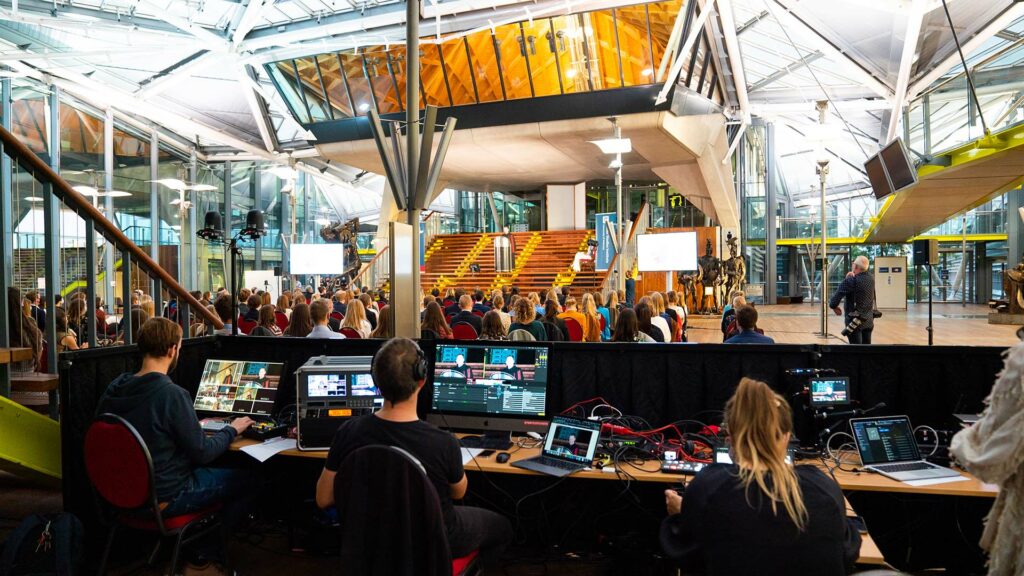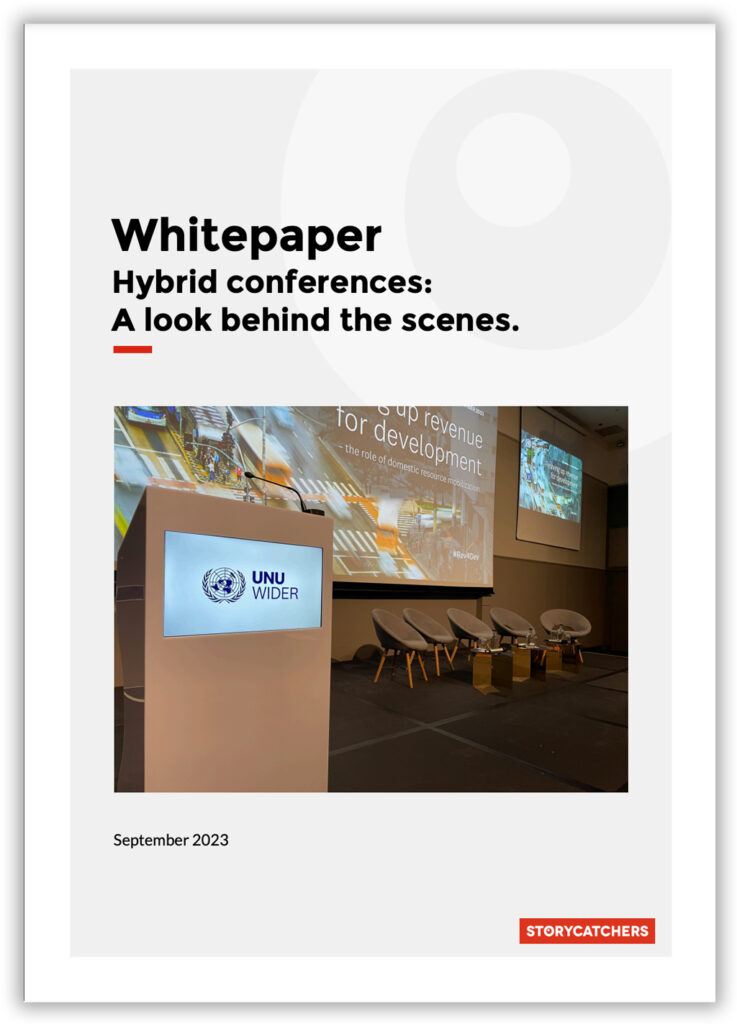Hybrid conferences
It is hardly imaginable that until recently you could organize a conference or seminar in the format of a physical event. At best, it could be followed online via live streaming.
Today, as an organizer, you’d better opt for hybrid events. And make sure that all participants can also participate in your event through a digital platform.
But how do you approach this? We give you a few tips for a successful hybrid conference.

Step 1
Place your participants at the center.
In a true hybrid conference, you start from the participant’s point of view. As an organizer, you can invite potential customers to physically attend your event, but that doesn’t mean they will.
Maybe they don’t want to travel at all. Or do they find the day’s program a bit too broad and only want to attend one specific workshop or keynote? And what if they decide shortly before the event to participate digitally because an important meeting has come up?
A hybrid conference can only succeed if you treat all participants the same from the start. This means that you have one common list of participants and accept that some only decide at the last minute to be there physically or not at all. As an organizer, this is a challenge, but rather a digital participant than a no-show.
Step 2
Choose the right digital event platform for your hybrid conference.
Between the registration for your hybrid conference and the event itself, there are usually a few weeks. A period in which the agenda of your participant can be changed considerably. But that doesn’t have to be a problem.
By using a hybrid event platform, managing registrations becomes a lot easier. In fact, because physical participants also get access to the event platform, they can join in the chat and interactively participate in the polls from the room. That also makes your event more interactive. For everyone.
Haven’t found a suitable platform yet? Then definitely take a look at Hopin. Or contact our conference experts for tailored advice.
Step 3
Choose the right audiovisual support for your hybrid conference.
Did you also used to doubt which sessions you would offer online via live streaming and which were reserved for the attendees at your conference? Don’t. In fact, if you want to treat attendees equally and use the right platform, there’s little reason to do so. In a hybrid conference, all technology is controlled centrally.
Controlling lights and cameras, operating presentations or even establishing remote connections with presenters abroad is done from one common control. Indeed, hybrid conferences require custom audiovisual support. But through cleverly assembled sets of materials, this can usually be done in a cost-effective manner.
Some convention centres or meeting rooms come standard with the necessary equipment for hosting hybrid conferences. If this is not the case, a mobile control set can quickly provide a temporary solution. For the plenary programme, but certainly also for breakout sessions or workshops in the various rooms.
Step 4
Make smart use of your data even after your conference.
Yes. In many cases, memories of a few inspiring speakers are what remain after an event. With any luck, supplemented by some nice photos and an attendee list with the contact details of your new prospects.
With digital conferences, things are a little different. Not only do you know exactly who attended which sessions, you also have an overview of what participants shared via chat. This information allows you to start a much more targeted relationship with your participants afterwards. Or to make the next edition an even greater success, of course.
And did we mention that all sessions are recorded and that the videos are available to your organisation afterwards?
